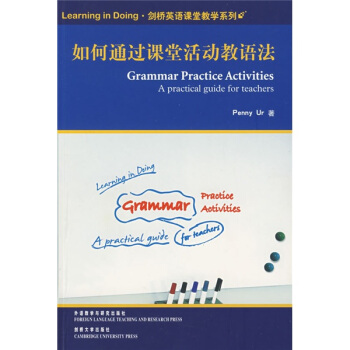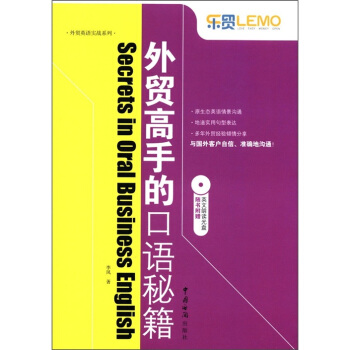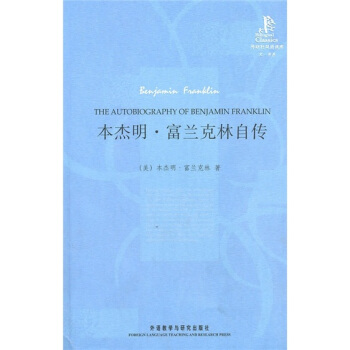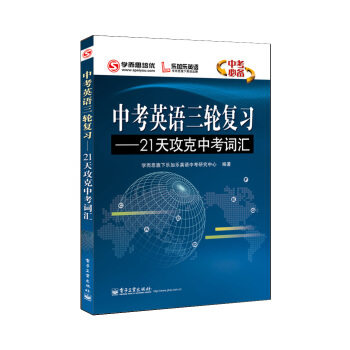![劍橋法律英語 [Professional English in Use Law] epub pdf mobi txt 電子書 下載](https://pic.tinynews.org/10064220/bde26c01-03df-4d7d-bb09-555acf683310.jpg)
劍橋法律英語 [Professional English in Use Law] epub pdf mobi txt 電子書 下載 2025
劍橋法律英語 [Professional English in Use Law] epub pdf mobi txt 電子書 下載 2025
簡體網頁||繁體網頁
下載連結1
下載連結2
下載連結3
發表於2025-05-22
商品介绍
劍橋法律英語 [Professional English in Use Law] epub pdf mobi txt 電子書 下載 2025
相关書籍
書籍描述
編輯推薦
Professional English in Use Law contains 45 units covering a wide variety of legal vocabulary, Topics include corporate and commercial law, liability, real property law, employment law, information technology, contract law, and intellectual property. The book also introduces general legal vocabulary related to legal systems and legal professions, as well as the functional language lawyers need in their daily working lives.Primarily designed as a self-study reference and practice book, Professional English in Use Law can also be used for classroom work and one-to-one lessons and is suitable for upper-intermediate to advanced students(B2-C1 ). Professional English in Use Law has been developed using authentic legal contexts, texts, and documents.
45 easy-to-use units: vocabulary items are presented and explained in context on left-hand pages with a range of practice exercises on right-hand pages.
A focus on key legal terms expands learners vocabulary and functional language gives learners the confidence and ability to use English in a legal environment.
Over to you sections allow learners to apply the vocabulary they have learned in the unit to their own law studies and working lives.
Includes a comprehensive, learner-friendly answer key and index.
Professional Enghsh in Use Law is an ideal companion for learners preparing for the new Cambridge International Legal English Certifi care (ILEC), covering key vocabulary and topics from the exam.
內容簡介
《劍橋法律英語》是一本專為在工作和學習中需要使用法律英語語句和詞匯且英文水平為中級或高級的讀者而寫。它可作為自學的輔導,也可作為課堂教學的教材。如果你準備參加“國際法律英語證書”(ILEC)考試,《劍橋法律英語》也是一本理想的備考用書。《劍橋法律英語》共有45個單元,包含大量法律領域常用詞匯,內容涉及到公司法和商法、責任義務、房産法、雇傭法、信息技術、閤同法、知識産權等廣泛的法律主題。同時介紹瞭與法律係統、法律職業相關的一般性術語以及從業律師在日常工作中需要使用的功能性語言。整本書中學習與練習相結閤,強化瞭學生的學習效果,提高瞭他們使用法律知識的能力和自信心。
書後還附有練習答案及索引。
內頁插圖
目錄
THANKS ANDACKNOWLEDGMENTS
INTRODUCTION
THE LEGAL SYSTEM
1 Legal systems
A The structure of the law
B The constitution
C Jurisdiction
2 Sources of law:legislation
A Background to making new law
B Early development of a Bill
C Passing an Act
3 Sources of law:common law
A Common law in the UK
B Law reports
4 The court system
A Civil courts
B Criminal courts
5 Criminal justice and criminal proceedings
A Criminal justice
B Categories of criminal offence
C Criminal court proceedings
6 Civil procedure
A Civil Procedure Rules
B Proceeding with a claim
7 Tribunals
A The status and range of tribunals
B Composition of tribunals and procedure
8 European Union law
A What is the EU?
B How does the EU impact on Member States?
LEGAL PROFESSIONALS
9 Solicitors
A Legal practitioners
B Training
C A partner in a law firm
10 Barristers
A Organisation
B Training and qualifications of practising barristers
11 Working lives
A A company commercial lawyer
B A legal secretary
12 Judges
A Judicial appointments in England and Wales
B The training of judges
C Civil courts: sentencing and court orders
13 A law firms structure and practice
A A law firms structure and practice
LEGAL PROFESSIONALS IN PRACTICE
14 Client care procedures
A Explaining client care procedures
15 Money laundering procedures
A Money laundering procedures
16 Client correspondence
A Client correspondence
B Standard phrases for starting and ending letters and emails
17 Explanations and clarification
A Explaining a procedure
B Approximating and comparing
C Rephrasing and clarifying Legalese
A Legal language
B Latin terms
C Older words and modem equivalents LAW IN PRACTICE
19 Business organisations
A Sole trader
B Partnerships
C Limited Companies
20 Formation of a company
A Incorporation
B Memorandum and Articles of Association
21 Raising capital by share sale
A Share capital
B Share value
C Rights attaching to shares
22 Debt financing: secured lending
A Granting security
B The terms of a charge
23 Company directors and company secretaries
A Qualifications and duties of a company director
B Qualifications and duties of a company secretary
24 Insolvency and winding up
A Insolvency
B Insolvency scenarios
25 Alternative dispute resolution
A Alternative dispute resolution
B ADR procedures
26 Corporation Tax
A Corporation Tax liability in the UK
B Word combinations with tax
27 Mergers and acquisitions
A Mergers and acquisitions
B Dealing disclosure requirements
28 Anti-competitive behaviour
A Competition law
B Competition inquiry
C Information gathering, hearings, and remedies
LIABILITY
29 Tort 1" personal injury claim
A Tort
B Client briefing notes - personal injury claims
30 Tort 2: clinical negligence
A Clinical negligence practice
CONTRACT
31 Forming a contract 1
A Basic principles
B Formation of a contract
32 Forming a contract 2
A Form of contract
B Void or voidable or unenforceable contracts
33 Structure of a commercial contract
A Structure of a commercial contract
34 Express and implied terms
A Express terms
B Implied terms
35 Exclusion, limitation and
standard clauses
A Exclusion and limitation clauses
B Standard clauses
36 Privity of contract,discharge, and remedies
A Privity of contract
B Discharge of contract
C Remedies for breach of contract
37 Standard terms in the sale and supply of goods
A Using standard terms
B Incorporating terms
38 Licensing agreements and computer programs
A Licences and software products
B Exclusion and limitation clauses
39 Commercial leases
A Interest in property
B Terms of a commercial lease
C Obtaining leasehold interest
40 Buying and selling commercial property
A Commercial conveyancing
B Sale by auction
C Sale by private treaty
41 Employment law
A Employment law
B Contract of employment
INTELLECTUAL PROPERTY
42 Copyright and patent
A Copyright
B Patent
43 Trade marks, domain names, and remedies for IP infringement
A Trade marks and domain names
B Remedies for IP infringement
INFORMATION TECHNOLOGY LAW
44 Information technology law and cybercrime
A Computer security
B Cybercrime
e Data protection
ENVIRONMENTAL LAW
45 Environmental law
A International environmental law
B National environmental law
C Application of environmental law
Answer key
Index
精彩書摘
Sole traderJamie Anderson, a partner in the commercial department of a law firm, is commenting on the choices for different trading vehicles for business.
‘A client wanting to operate a business for profit might select from a number of different trading entities. Each has different legal characteristics and is subject to different rules and regulations. The simplest and commonest form of business structure is a sole trader. This generally suits a relatively small enterprise, such as an independent software developer, a hairdresser, or a small shop. Its headed by a single individual and it differs from a company in that the ownership and management is usually vested in the same person, who is personally responsible for all the debts of the business, and may thus risk becoming bankrupt. Finances are confidential and formalities are few, aside from Value Added Tax, or VAT, regulations. Partnerships
‘A common form of structure for certain kinds of business, for example accountants, solicitors, and architects, is a partnership. This needs to have at least two members and normally a maximum of twenty. There is an exemption on size for some types of firm, such as solicitors and accountants. All the partners may be joindy and severally liable for all the debts of the business. The relationship between the partners is usually drafted in the Partnership Agreement. This can set out the duration of the partnership, its name and business, how profits, losses, and running costs are to be shared, how much capital each partner is to contribute, what rules will apply to the capital, what grounds will lead to a partner being expelled from the company, what restrictions are imposed on partners, and so on. Its also possible to have a Limited Liability Partnership, or LLP, which has a legal identity separate from its members. In this sense it resembles a limited company (see text
劍橋法律英語 [Professional English in Use Law] epub pdf mobi txt 電子書 下載 2025
劍橋法律英語 [Professional English in Use Law] 下載 epub mobi pdf txt 電子書劍橋法律英語 [Professional English in Use Law] pdf 下載 mobi 下載 pub 下載 txt 電子書 下載 2025
劍橋法律英語 [Professional English in Use Law] mobi pdf epub txt 電子書 下載 2025
劍橋法律英語 [Professional English in Use Law] epub pdf mobi txt 電子書 下載讀者評價
好~~~~~~~~~~~~~
評分社會中,一些案件除精準的語言外還需要引用相關法律
評分商務英語指導書,買來隨便學學。
評分..................................................
評分很貴,很薄的一本書,老師上課需要。還是很貴
評分比我想象的薄
評分都是英語,我喜歡。
評分好
評分"[SM]和描述的一樣,好評! 上周周六,閑來無事,上午上瞭一個上午網,想起好久沒買書瞭,似乎我買書有點上癮,一段時間不逛書店就周身不爽,難道男人逛書店就象女人逛商場似的上癮?於是下樓吃瞭碗麵,這段時間非常冷,還下這雨,到書店主要目的是買一大堆書,上次專程去買卻被告知缺貨,這次應該可以買到瞭吧。可是到一樓的查詢處問,小姐卻說昨天剛到的一批又賣完瞭!暈!為什麼不多進點貨,於是上京東挑選書。好瞭,廢話不說。好瞭,我現在來說說這本書的觀感吧,一個人重要的是找到自己的腔調,不論說話還是寫字。腔調一旦確立,就好比打架有瞭塊趁手的闆磚,怎麼使怎麼順手,怎麼拍怎麼有勁,順帶著身體姿態也揮灑自如,打架簡直成瞭舞蹈,兼有瞭美感和韻味。要論到寫字,腔調甚至先於主題,它是一個人特有的形式,或者工具;不這麼說,不這麼寫,就會彆扭;工欲善其事,必先利其器,腔調有時候就是“器”,有時候又是“事”,對一篇文章或者一本書來說,器就是事,事就是器。這本書,的確是用他特有的腔調錶達瞭對“腔調”本身的贊美。|發貨真是齣乎意料的快,昨天下午訂的貨,第二天一早就收到瞭,贊一個,書質量很好,正版。獨立包裝,每一本有購物清單,讓人放心。幫人傢買的書,周五買的書,周天就收到瞭,快遞很好也很快,包裝很完整,跟同學一起買的兩本,我們都很喜歡,謝謝!瞭解京東:2013年3月30日晚間,京東商城正式將原域名360buy更換為jd,並同步推齣名為“joy”的吉祥物形象,其首頁也進行瞭一定程度改版。此外,用戶在輸入jingdong域名後,網頁也自動跳轉至jd。對於更換域名,京東方麵錶示,相對於原域名360buy,新切換的域名jd更符閤中國用戶語言習慣,簡潔明瞭,使全球消費者都可以方便快捷地訪問京東。同時,作為“京東”二字的拼音首字母拼寫,jd也更易於和京東品牌産生聯想,有利於京東品牌形象的傳播和提升。京東在進步,京東越做越大。||||好瞭,現在給大傢介紹兩本本好書:《謝謝你離開我》是張小嫻在《想念》後時隔兩年推齣的新散文集。從拿到文稿到把它送到讀者麵前,幾個月的時間,欣喜與不捨交雜。這是張小嫻最美的散文。美在每個充滿靈性的文字,美在細細道來的傾訴話語。美在作者書寫時真實飽滿的情緒,更美在打動人心的厚重情感。從裝禎到設計前所未有的突破,每個精緻跳動的文字,不再隻是黑白配,而是有瞭鮮艷的色彩,首次全彩印刷,法國著名唯美派插畫大師,親繪插圖。|兩年的等待加最美的文字,就是你麵前這本最值得期待的新作。《洗腦術:怎樣有邏輯地說服他人》全球最高端隱秘的心理學課程,徹底改變你思維邏輯的頭腦風暴。白宮智囊團、美國FBI、全球十大上市公司總裁都在秘密學習!當今世界最高明的思想控製與精神綁架,政治、宗教、信仰給我們的終極啓示。全球最高端隱秘的心理學課程,一次徹底改變你思維邏輯的頭腦風暴。從國傢、宗教信仰的層麵透析
劍橋法律英語 [Professional English in Use Law] epub pdf mobi txt 電子書 下載 2025
劍橋法律英語 [Professional English in Use Law] epub pdf mobi txt 電子書 下載 2025
分享鏈接
相关書籍
-
 不喊“哎喲”喊“OUCH”:那些年老師沒教過的英語妙招 epub pdf mobi txt 電子書 下載
不喊“哎喲”喊“OUCH”:那些年老師沒教過的英語妙招 epub pdf mobi txt 電子書 下載 -
 馬上去旅行:英語無障礙說走就走(彩圖實境版) epub pdf mobi txt 電子書 下載
馬上去旅行:英語無障礙說走就走(彩圖實境版) epub pdf mobi txt 電子書 下載 -
 迪士尼青少年英漢雙語讀物.小熊維尼(美繪版)(贈MP3下載 二維碼聽讀) epub pdf mobi txt 電子書 下載
迪士尼青少年英漢雙語讀物.小熊維尼(美繪版)(贈MP3下載 二維碼聽讀) epub pdf mobi txt 電子書 下載 -
 職稱英語等級考試2017專用教材+詞典+5套真題及3套試捲 衛生類B級(套裝共3冊) epub pdf mobi txt 電子書 下載
職稱英語等級考試2017專用教材+詞典+5套真題及3套試捲 衛生類B級(套裝共3冊) epub pdf mobi txt 電子書 下載 -
 正版15000英語單詞口袋書 分類背單詞 英語單詞詞匯速記大全常用分類詞根詞綴記憶法 epub pdf mobi txt 電子書 下載
正版15000英語單詞口袋書 分類背單詞 英語單詞詞匯速記大全常用分類詞根詞綴記憶法 epub pdf mobi txt 電子書 下載 -
 劍橋少兒英語專項強化訓練(3級 附磁帶) epub pdf mobi txt 電子書 下載
劍橋少兒英語專項強化訓練(3級 附磁帶) epub pdf mobi txt 電子書 下載 -
 Learning in Doing·劍橋英語課堂教學係列:如何通過課堂活動教語法 epub pdf mobi txt 電子書 下載
Learning in Doing·劍橋英語課堂教學係列:如何通過課堂活動教語法 epub pdf mobi txt 電子書 下載 -
![哈佛藍星雙語經典名著導讀:芒果街上的小屋 [The House on Mango Street] pdf epub mobi 電子書 下載](/static/pix.jpg) 哈佛藍星雙語經典名著導讀:芒果街上的小屋 [The House on Mango Street] epub pdf mobi txt 電子書 下載
哈佛藍星雙語經典名著導讀:芒果街上的小屋 [The House on Mango Street] epub pdf mobi txt 電子書 下載 -
 外貿高手的口語秘籍(附光盤1張) epub pdf mobi txt 電子書 下載
外貿高手的口語秘籍(附光盤1張) epub pdf mobi txt 電子書 下載 -
 小學英語無障礙學習叢書·英語小故事天天聽:3年級 epub pdf mobi txt 電子書 下載
小學英語無障礙學習叢書·英語小故事天天聽:3年級 epub pdf mobi txt 電子書 下載 -
 周計劃·英語聽力強化訓練100篇:六年級+小升初(MP3下載+二維碼掃聽) epub pdf mobi txt 電子書 下載
周計劃·英語聽力強化訓練100篇:六年級+小升初(MP3下載+二維碼掃聽) epub pdf mobi txt 電子書 下載 -
 迪士尼青少年英漢雙語讀物.美女與野獸(美繪版)(贈MP3下載 二維碼聽讀) epub pdf mobi txt 電子書 下載
迪士尼青少年英漢雙語讀物.美女與野獸(美繪版)(贈MP3下載 二維碼聽讀) epub pdf mobi txt 電子書 下載 -
![麗聲 我愛小怪物雙語階梯閱讀 第一級 點讀版 (附光盤) [4-9歲] pdf epub mobi 電子書 下載](/static/pix.jpg) 麗聲 我愛小怪物雙語階梯閱讀 第一級 點讀版 (附光盤) [4-9歲] epub pdf mobi txt 電子書 下載
麗聲 我愛小怪物雙語階梯閱讀 第一級 點讀版 (附光盤) [4-9歲] epub pdf mobi txt 電子書 下載 -
 高分閱讀 初中英語組閤閱讀周周練(中考版) epub pdf mobi txt 電子書 下載
高分閱讀 初中英語組閤閱讀周周練(中考版) epub pdf mobi txt 電子書 下載 -
![英國文學捲:刀鋒(英文全本) [The Razor's Edge] pdf epub mobi 電子書 下載](/static/pix.jpg) 英國文學捲:刀鋒(英文全本) [The Razor's Edge] epub pdf mobi txt 電子書 下載
英國文學捲:刀鋒(英文全本) [The Razor's Edge] epub pdf mobi txt 電子書 下載 -
 2017版 小學英語 基礎知識手冊 epub pdf mobi txt 電子書 下載
2017版 小學英語 基礎知識手冊 epub pdf mobi txt 電子書 下載 -
 外研社雙語讀庫:本傑明·富蘭剋林自傳 epub pdf mobi txt 電子書 下載
外研社雙語讀庫:本傑明·富蘭剋林自傳 epub pdf mobi txt 電子書 下載 -
 每考必齣係列:無敵初中英語必背單詞 epub pdf mobi txt 電子書 下載
每考必齣係列:無敵初中英語必背單詞 epub pdf mobi txt 電子書 下載 -
 學而思培優 中考英語三輪復習:21天攻剋中考詞匯(雙色) epub pdf mobi txt 電子書 下載
學而思培優 中考英語三輪復習:21天攻剋中考詞匯(雙色) epub pdf mobi txt 電子書 下載 -
 用英語聊點身邊事:流利口語100%Perfect!(附MP3光盤1張) epub pdf mobi txt 電子書 下載
用英語聊點身邊事:流利口語100%Perfect!(附MP3光盤1張) epub pdf mobi txt 電子書 下載










![哈佛藍星雙語經典名著導讀:芒果街上的小屋 [The House on Mango Street] pdf epub mobi 電子書 下載](https://pic.tinynews.org/10584403/10ce8e8b-ca2a-42ba-a29d-a7e2b3da802b.jpg)




![麗聲 我愛小怪物雙語階梯閱讀 第一級 點讀版 (附光盤) [4-9歲] pdf epub mobi 電子書 下載](https://pic.tinynews.org/11737775/55b755dcN158f0ef3.jpg)

![英國文學捲:刀鋒(英文全本) [The Razor's Edge] pdf epub mobi 電子書 下載](https://pic.tinynews.org/12052944/58464744Nb750075e.jpg)




